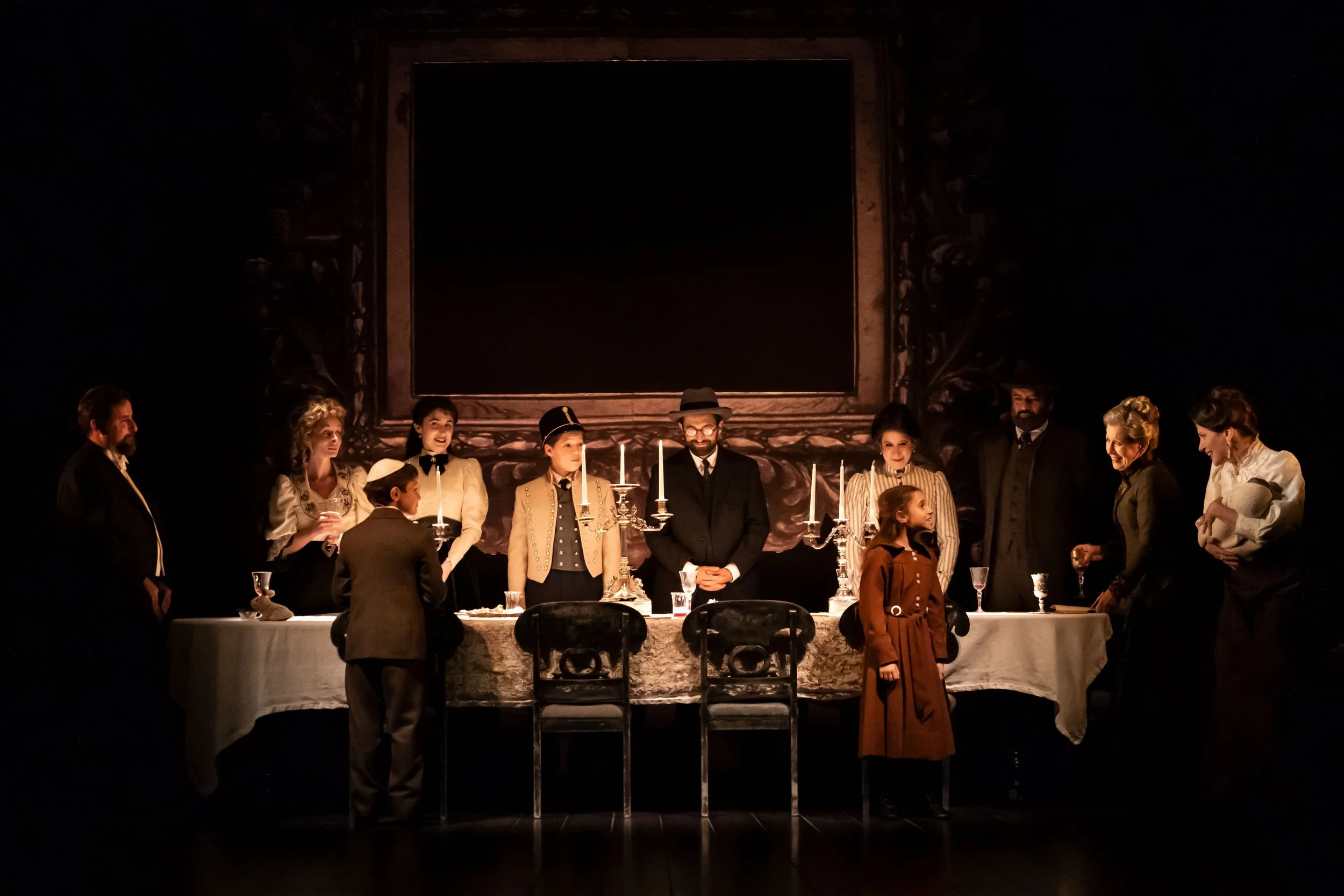A forgotten Vienna in Tom Stoppard's 'Leopoldstadt'
Image: Joan Marcus
Author: Kayla Bellin
When one thinks of Vienna, one typically does not picture the Jewish bourgeois of Viennese society. However, the play Leopoldstadt, written by Tom Stoppard and directed by Patrick Marber, displays the reality of the past by bringing this social group to the forefront of the mind and expertly illustrates that Judaism and Vienna were one and the same in the past.
Leopoldstadt is performed at the Longacre Theatre near Times Square. The play runs for two hours and ten minutes without an intermission, but the hours fly by as the intricate story unfolds. The play narrates the story of an upper class Jewish family in Vienna, Austria, and takes place from the turn of the century in 1899 through the year 1955. The show covers the family’s life in times of joy and during times of immense sorrow, as viewers first encounter the family during a lighthearted period before the plot transitions to a dark period when the characters come to face World War I and the Holocaust.
Before the curtain rises, images of old Vienna and famous Viennese figures are displayed on screen. This slideshow immediately sets the tone for the play and serves as a sort of portal to the past by transporting the audience to 19th century Vienna before the first word is uttered. The show’s title refers to the Jewish quarter of Vienna, the area in which Jews were permitted to reside, but the Merz family, which acts as the focal point of the show, is not confined to that space. Instead they find themselves in an upscale neighborhood after years of assimilation into Viennese society. The show begins during the holiday season in the Merz family’s apartment, which is filled with an agglomeration of extended family members and a Christmas tree. The family’s conversation is scattered and fast-paced, as if the audience has intruded on their casual discourse. Jacob, one of the grandchildren whose mother is Catholic, places a Star of David on top of the Christmas tree, and his relatives laugh at his confusion. The family is clearly in tune with Viennese culture and society. They seem to be a paradigmatic aristocratic family.
Although the entirety of the play takes place within one room of the apartment, the scenery changes often to reflect current events and the family’s changing economic status. The set design and costumes darken during troubled times, which further communicates the story to the audience in an indirect manner. The set and costume designs are masterful and contribute to the show’s impact.
Leopoldstadt has a cast of 38 actors—some of whom play multiple roles. This enormous cast presents a challenge when trying to follow the characters accurately because the story moves quickly and can feel as if there are too many characters to keep track of. However, the main roles that truly shape the story are memorable because their narratives are pronounced, giving them a central role in the story as it is shaped by outside events. While some characters do not seem essential to the storyline, altogether they work cooperatively to tackle the daunting topic of antisemitism in 20th century Europe by creating an endearing family that makes a warm impression on the audience.
Even though tackling a topic as difficult as antisemitism and the Holocaust in a casual theater setting presents a challenge, Leopoldstadt rises to the occasion by illustrating the humanity of each individual so that the audience becomes attached to these personalities. They mature, develop love interests, marry and have children, contend with sickness, and deal with human errors such as affairs and mistakes from the past. Each character becomes a focus in their own right, as the audience comes to know their fears, hopes, and dreams. Therefore, when the impacts of antisemitism and the Holocaust rear their ugly heads later on, playgoers understand the struggle within the context of each individual as well as the collective family unit. Heartstrings are pulled when the Merz family is forced to relinquish their business and must watch their property be stolen away. Although little physical violence is depicted, Leopoldstadt expertly paints a poignant and powerful depiction of antisemitism and baseless hatred in a way that leaves viewers breathless.
The play delivers an enduring message - that there is no defense that can protect people from true resentment. Wealth, religious affiliation, nationality, and societal prominence are ineffective bulwarks against the power of hatred. Today, as sentiments of animus and hatred are unfortunately on the rise, Leopoldstadt can serve to teach an important lesson and warn against the potential destruction caused by these feelings.



